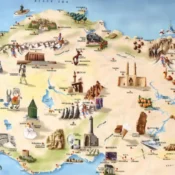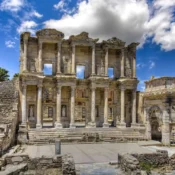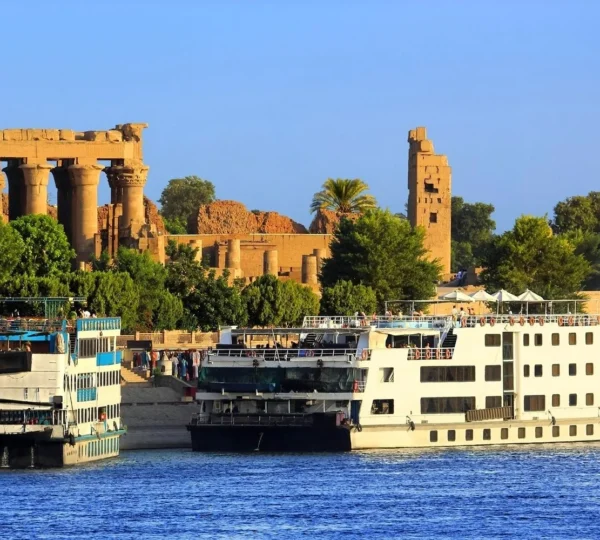The Rich History and Geological Formation of Cappadocia: Civilizations, Beliefs, and Economy

The Rich History and Geological Formation of Cappadocia: Civilizations, Beliefs, and Economy
The Formation of Cappadocia
Cappadocia is designed with remarkable rock formations in Central Turkey, formed millions of years ago by volcanic rock and erosion. The collision of two major tectonic plates is about 60 million years ago. The Taurus Mountains were formed during this collision, as a result of these mountains, very explosive volcanic activities happened. The gigantic eruptions of the ancient volcanoes, especially by Mount Erciyes, Mount Hasan, and Mount Göllü,. With time, wind and water eroded the softer layers of tuff, leaving behind the characteristic fairy chimneys, pillars, and rock formations that mark Cappadocia’s landscape today.

visit underground city in cappadocia
Civilizations That Lived in Cappadocia
Over thousands of years, several civilizations lived in Cappadocia and left their own touch on culture, religion, and the economy. Some of these well-known civilizations are:
- Hittites, 1600–1200 BC: Among the very first few known civilizations that were established in this region were the Hittites. They were an empire with its great center at Hattusa. Cappadocia was included in their large trading network area. Similarly, their sturdy relationships were laid down with ancient Mesopotamian cultures.
- Phrygians (8th Century BC): Following the collapse of the Hittite Empire, the Phrygians came to reside in Cappadocia. They left behind tombs cut out from the rocks and contributed to the early art and architecture of the region.
- Persians (6th–4th Century BC): After the Phrygians, Cappadocia was included in the Persian Achaemenid Empire under Cyrus the Great. The region became a satrapy, with
- Romans and the Byzantines (1st Century BC – 11th Century AD): The Romans conquered Cappadocia in the 1st century BC, and it became an important region for the Byzantine Empire. Early Christianity found a great place to develop, and many religious groups went into the natural caves of Cappadocia and underground cities. Monasteries, rock churches, and frescoes were hewn out.
- Seljuks and Ottomans: 11th Century AD – 20th Century The Byzantines succeeded in holding off the Seljuks, who were followed by the Ottomans. Cappadocia by then became part of the developing Islamic world, although retaining Christian minorities and religious significance.
Hittites and Phrygians: Many of these ancient settlers were polytheists. Their gods stretched right from nature and agriculture to war. They made frequent sacrifices to the gods in open altars or rock-cut shrines. Persians: In came the Persians, introducing Zoroastrianism as a dualistic faith resolving around the worship of Ahura Mazda, god of wisdom, light, and truth, and the fight against the evil spirit Angra Mainyu.
Christianity: In the 4th century AD, when Christianity spread, Cappadocia became one of the important centers for the very first Christian communities. The monks and religious refugees hid from Roman persecution by carving churches and monasteries into the rocks.
Some of the most important theologians in the early Christian world came from this region: Saint Basil of Caesarea, Saint Gregory of Nyssa, and Saint Gregory of Nazianzus are known as the Cappadocian Fathers. Particularly, Christianity had flourished in Cappadocia throughout the Byzantine period, and its rock-cut churches still exhibit magnificent frescoes depicting biblical stories.
Islam: With the Seljuk conquest, Islam came into prominence. The mosques, caravanserais, and Islamic schools (madrasas) in this region reflect both the Seljuk and Ottoman influence.

Best Places to Visit Cappadocia
Economic Structures
The economy of Cappadocia has been influenced by its geography and natural resources:
Agriculture: Because of the volcanic ash, which made the soil very fertile, Cappadocia has always been a place for agriculture. Farmers grew different kinds of grains, grapes for wine, and fruits like apricots. Livestock included sheep and goats.
Trade: Cappadocia was well-placed on the Silk Road-a main route that connected the East to the West-whereby merchants passing through traded items such as silk, spices, and textiles. The caravanserais built by the Seljuks were important in promoting trade and commerce.
Mining and Pottery: Volcanic tuff in this region gave easy access to the stone for carving homes, churches, and storage places. The clays of Cappadocia were also suitable for the production of pottery; thus, the ceramics became famous.
Tourism (Modern Era): During the last few centuries, tourism became one of the main industries in Cappadocia. Plenty of tourists come to see special landscapes, underground cities, and historical churches; therefore, hospitality and tourism became popular economic sectors in this area nowadays.
Early Periods – Hittites and Phrygians: Society was hierarchical in structure: king, priest, warrior; down through artisan, farmer, and laborer. Religion held a vital position in governance and social life.
Roman and Byzantine Periods: Christianity became one of the salient features of the sociological make-up of Cappadocia. Life was much influenced by monasteries and religious communities, while monks, priests, and bishops had great influence. In light of religious life, towns and villages took shape, and with this, the social order received a strong link with Christian dogma.
Islamic Rule: Under the Seljuks, and later Ottoman rule, Cappadocia continued as a stratified society with the sultans, emirs, and amirs on the top, followed by the religious heads. Though under Islamic rule, there was a lot of forcible conversions into Islam; the region retained its large Christian population, and both lifestyles continued to thrive side by side. The Ottomans had a system called devshirme through which at times, especially during lean years, Christian boys of Cappadocia
Modern Era: In the 20th century, with the emergence of the Turkish Republic, Cappadocia became integrated into the social and political order of modern-day Turkey. Urbanization and modernization changed the social structure, but most of the traditional ways, such as agriculture and handicrafts, had survived.
It was one of the most interesting parts of the world because of its very special geological formation, rich cultural history, and highly diversified religious and economic structure. From ancient polytheistic beliefs to early Christian monasticism and Islamic influences, all can be reflected in this region as part of the great and varied history of humankind. Nowadays, Cappadocia stands as testimony to the power of civilizations and to the beauty of nature it upholds, hosting travelers from all over the world.









